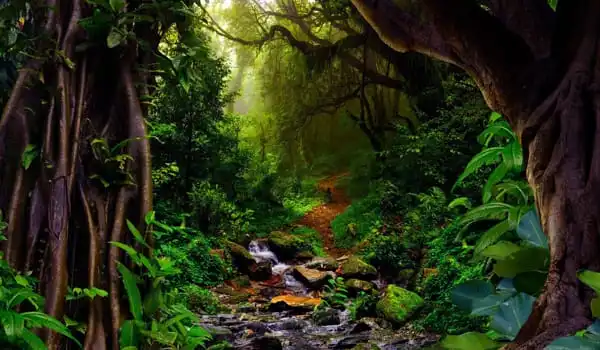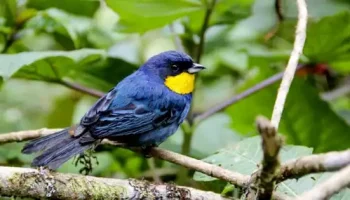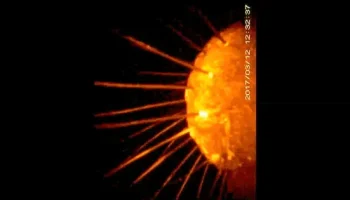The Amazon is a very dynamic place. It is the world’s biggest rainforest and river system, as well as northern South America’s most ecologically diversified region. The Amazon Biome’s tropical rainforest is a wet broadleaf forest that encompasses 21,23,561 square miles (55,00,000 square kilometers). The Guiana Highlands to the north, the Andes Mountains to the west, the Brazilian central plateau to the south, and the Atlantic Ocean to the east define this region, which covers around 40% of Brazil’s total geographical area.
The Amazon Rainforest is not only the world’s largest forest in terms of area, but it is also the world’s richest and most diverse biological reservoir, with several million species of insects, plants, birds, and other forms of life, many of which are still unknown to science. It is also home to one out of every ten species on the planet. The Amazon rainforest is the world’s most biodiverse and biggest rainforest, with the most variety of animals and plants. Unfortunately, it is smaller than it once was, and it has already lost 20% of its native flora and animal population.
Deforestation, mismanagement, and degradation have wreaked havoc on these forests in recent years, and it continues to do so. The world’s biggest rainforest is a magnificent sight, millions of years old and home to a diverse range of flora and animals, including the monkey brush vine, piranhas, and dart poison frog, among many more.
More than 30 million people live in the Amazon, including 350 indigenous and ethnic groups who rely on nature for food, clothing, and traditional medicine. There is also a definite correlation between the Amazon’s health and the planet’s health. Rain forests, which contain 90 to 140 billion metric tons of carbon, aid in climate stabilization on a local and global scale. The Amazon also pours around 7 trillion tons of water into the sky each year, with its forests recycling 50 percent to 75 percent of yearly rainfall.
Deforestation from massive cattle ranching and agricultural development, poorly designed infrastructure, illicit and unsustainable natural resource extraction, and climate change are all challenges to the Amazon.

Seven more Facts About Amazon
- The Amazon River, a network of hundreds of waterways that reaches 6,840 kilometers, runs through the north of the jungle. Despite some disagreement, most experts believe that the Amazon is the world’s second-longest river, behind the Nile.
- In 2007, a guy called Martin Strel swam the whole length of the Amazon River! Martin swam through the water for up to 10 hours a day for 66 days to complete his splashing jungle adventure!
- The Amazon has a remarkably diverse ecosystem. There are approximately 40,000 plant species, 1,300 bird species, 3,000 fish species, 430 mammals, and 2.5 million insect species.
- The Pirarucu is a fascinating fish found in the Amazon. The pirarucu is a dangerous meat-eater that eats other fish and may grow to be about 3 meters long! And it has teeth on the top of its mouth and on its tongue!
- This breathtakingly beautiful location aids in the mitigation of climate change. This is because the lush vegetation absorbs carbon dioxide and releases oxygen into the atmosphere. The Amazon jungle produces more than 20 percent of the world’s oxygen.
- The Amazon is home to sloths, black spider monkeys, and poison dart frogs, as well as being one of Earth’s final refuges for jaguars, harpy eagles, and pink river dolphins. It is home to one out of every ten known species on the planet, including 40,000 plant species, 3,000 freshwater fish species, and over 370 reptile species. Since 1999, almost 2,000 new plant and animal species have been reported, including a monkey that purrs like a cat.
- The rainforest bottom is dark and gloomy, with only a fraction of the light filtering through the trees’ canopy.





